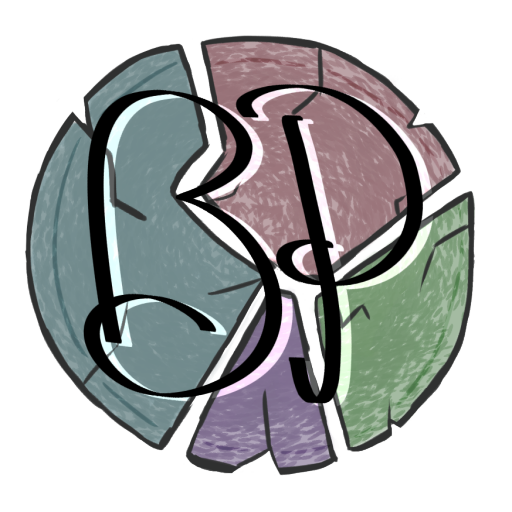Alysia Li Ying Sawchyn is a Senior Features Editor at The Rumpus. Her debut collection, A Fish Growing Lungs, was a finalist for the Believer Awards in nonfiction. She has received fellowships from the Sewanee Writers’ Conference and the Kenyon Writers’ Workshop, and she is an Assistant Professor at Warren Wilson College. Her next book, I Have This Thing for Flowers, is forthcoming from Flatiron Press in 2026.
Victoria Mayeaux (VM): What initially drew you to creative nonfiction?
Alysia Sawchyn (AS): I started writing when I was very, very young, certainly before I’d ever heard the term creative nonfiction, but even then, had always drawn from life—anything from my interests (Candyland!) to my actual lived experiences. By the time I got to college, I was writing “fiction.” I did take a class called something like Autobiography and Memoir, but it wasn’t until I was at Ball State and fell into one of Jill Christman’s classes that I was properly introduced to essay-writing.
(VM): On a website profile for Warren Wilson College, you wrote that although you write primarily nonfiction, “reading broadly is essential.” To what extent do the books you read—whether nonfiction or otherwise—influence or reshape your approach to your own work?
(AS): The reason I started writing when I was very, very young is probably because I’ve always loved to read. It’s my favorite form of escapism. I was introduced to and loved lot of Important Fiction Writers in high school whose work has had a very strong influence on my own writing, for better and for worse: Calvino, Faulkner, Kundera. Lots of long sentences, lots of fragments, lots of asides, and an extra dose of internalized misogyny.
When I know I’ve got a book, I’ll spend a lot of time reading about/around my project before I start writing. Once the drafting begins, I read very little within the genre because it’s so easy for me to inadvertently pick up different voices and styles, especially when I love what I’m reading.
(VM): You have taught creative writing for various organizations and universities. How has your work as a teacher shaped your approach to writing? Has working with other writers influenced your perspective on your own craft?
(AS): It’s been more the other way around! The longer I’ve been writing, the more I’ve realized how much time it takes and how idiosyncratic the writing process can be, both from person to person and project to project. My most frequent response to student questions is, it depends, followed by at least two contradictory examples.
(VM): What are some of the most enriching and fulfilling aspects of being a senior editor of The Rumpus? Would you say that having your own essays published in literary magazines—such as Brevity Magazine, Indiana Review, and Sweet: A Literary Confection—has informed your approach to reading and accepting submissions in The Rumpus?
(AS): Being able to provide a home for essays and sharing them with readers is incredibly rewarding. I think it all ties back to my love reading. Part of The Rumpus’ mission is to work with new writers, and the editors do more developmental edits than at any other magazine I’ve been accepted by or worked for. Reading for a magazine has been the best way to learn about when my own work is ready to go out. There’s nothing quite like repetition (pages and pages and pages of work) to see patterns.
(VM): Your essays in A Fish Growing Lungs explore deeply personal experiences with mental health, misdiagnosis, identity, and recovery, all under the scrutiny of societal expectations and stigma. What was the writing process like for these essays? And did you discover anything surprising about yourself in the act of putting your story on paper?
(AS): Starting the book, my mindset was something like, I can write an essay, so I just need to do that twelve times, but the math is more logarithmic than multiplication. There’s actually a craft essay on the Brevity blog about a difficult essay I wrote for the book and then ultimately didn’t include, but the essays in there all were very different to write: “Rice Grain Girl” was written in a fiction class (old habits die hard); “An Apology” took literally years; the first draft of “Wellness Index,” was almost exactly what’s in Fish, though it took a while to lightbulb on the shape of it.
A not-very-funny joke to answer the second part of your question:
Q: How much therapy do you need to write a book of creative nonfiction?
A: A whole lot, and then some.
(VM): What do you see as the importance of sharing these kinds of personal stories, especially for those facing similar struggles? How do you hope your experiences will resonate with or impact readers who may be navigating their own journeys with mental health?
(AS): I’ve been so fortunate to have people read my book. It’s a terrifying dream. There are two real people whom I think about when I write. Both are writers, and while one has their own struggles with mental health, she reads like I do—she wants to escape (to put it another way, to be compelled and engaged by the words on the page); any answers or self-recognition that happens along the way is part of the pleasure, but not the purpose.
A few years ago, someone reached out to me to say that they’d gotten a tattoo of one of the lines from Fish (of course, I asked for a photo, but it’s unfortunately been lost to the abyss of now-X). This was a surprising thing I learned about myself from Fish: Even though I have a lot of tattoos, I’d never even considered that my words might someday be resonant enough to a stranger for them to want to ink it into their skin.

